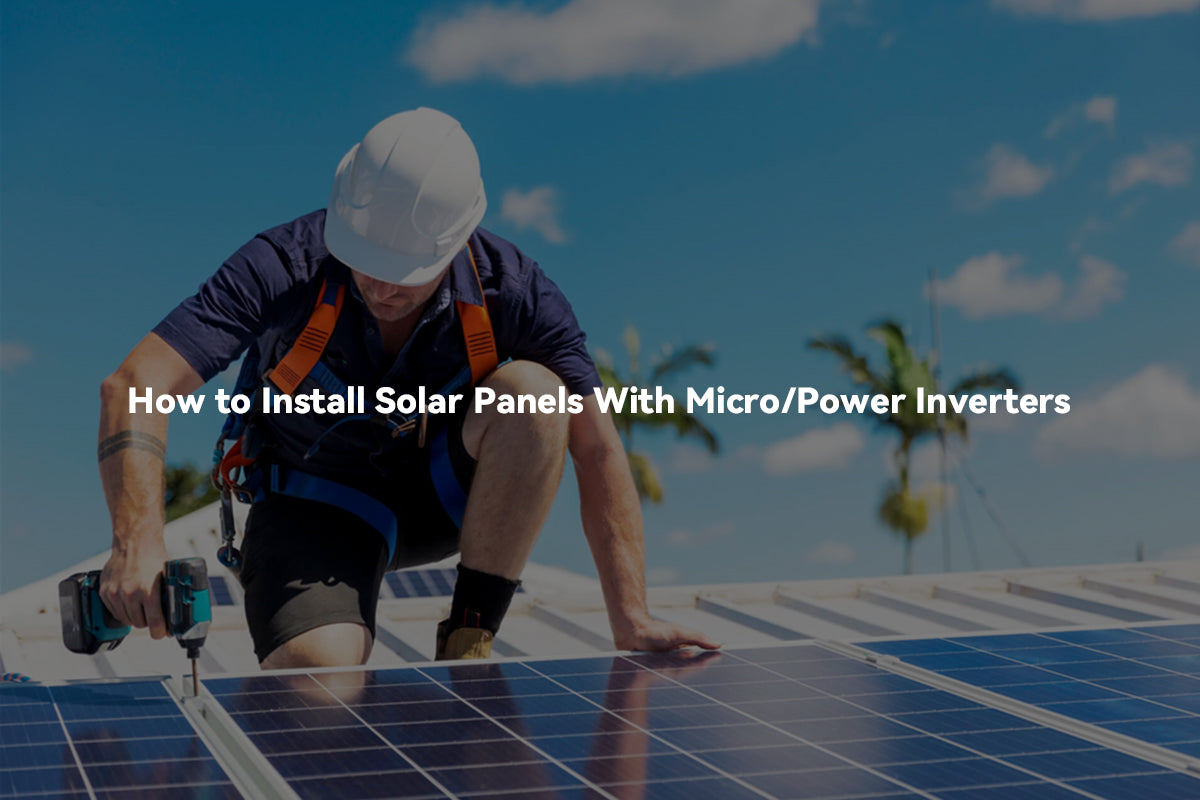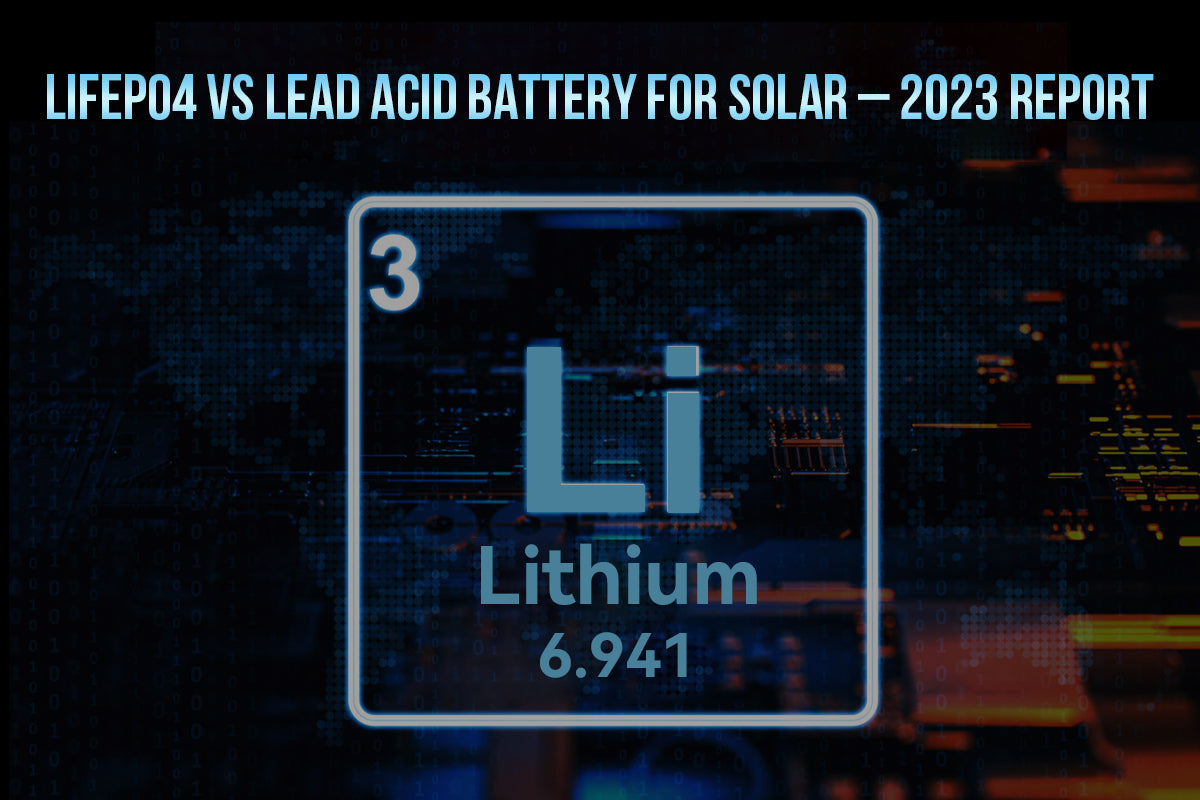Planning a DIY Solar Panel Array? Solar PV system components include solar panels, inverters, batteries, solar charge controllers, etc. Then there are also many people who will not install solar panels and inverters. In this post, we will explain the whole process of installing solar panel and connecting them with microinverter or power inverter.
Step to install solar panels with micro inverter
Microinverters are inverters installed right at the individual solar panel site. The steps for connecting each solar panel to the microinverter are the same, except for the first and the last microinverters in the solar panel array, which are slightly different.
Step 1. Connect the solar panel array to the junction box
- Connect the black and red (L1 and L2) of the first microinverter to the black and red wires of the facility and the neutral (blue) wire to the neutral (white) wire of the facility.
- Then connect the ground wire of the facility and the ground wire of the microinverter cases.
-
Connect the ground lug to the box properly to achieve good electrical contact.
Step 2. Wire the disconnect switch
- Connect the two leads (black and red) from the junction box to the lower switch lugs.
- And then attach them through the power distribution panel to the top switch lugs.
-
Connect the zero wire (white) from the junction box to the power distribution box.
-
After installing the ground lug, connect the ground wire from the facility's power distribution panel and the wiring box.
Step 3. Connecting Facility Wiring - PV Feeder Circuit Breaker
Make sure the circuit breaker and disconnect switch are in the off state when installing to prevent electric shock.
- Connect the disconnect switch wires (black and red) to the new breaker terminals.
- Connect the neutral wire (white) from the switch to the neutral bus of the distribution panel.
-
Connect the grounding wire (green) to the ground bus of the switchboard.
Step 4. Wire the PV panels and microinverters and start the system
- Connect the DC leads from the PV panels to the two DC input leads of the microinverter. Note that the inverter must have the same connector type as the PV panel.
- For the last microinverter (closest to the junction box), screw on the cover of the female connector to protect it from the weather. Then, secure the wire with the male connector to the threads of the female connector of the next inverter.
Do the same for the rest of the microinverters.
-
For the last microinverter (closest to the junction box), plug the male wire of the last inverter into the female wire of the previously wired junction box.
Step to install solar panels with power inverter
The connection of the power inverter to the solar panel is relatively simple.

Step 1. Connect the solar panels in series or parallel
A string consists of two wires, positive and negative. The PV modules connected in series or parallel will be further connected to the power inverter through the series connection.
Tips:
A DC breaker is also introduced in the string to ensure the safety of the system from accidental current variations. As a safety precaution against electrical surges, a surge arrestor is installed and grounding needs to be done.
Step 2. Wire the solar panel string to the controller
Connect the positive and negative terminals of your charge controller to the corresponding sockets on your solar panel
Pay very close attention to the +’s and -’s, as connecting the wrong parts could critically damage your charge controller.
Step3. Connect the controller and power inverter
Connect the positive battery cable to the solar charge controller "+" battery terminal. Connect the negative battery cable to the solar charge controller "-" battery terminal on the charge controller. It should be noted that the negative pole is connected first, and then the positive pole.
Solar inverter installation precautions
The growing maturity of solar photovoltaic power generation systems has prompted the rapid development of inverters.
All the electricity generated by the solar panel must be processed by the inverter before it can be output to the outside world.
The inverter plays an important role in the operation of the entire system. The following PowMr will talk about the installation and precautions of photovoltaic inverters in detail.
Unpacking inspection
After receiving the express, please check whether the outer packaging is damaged before opening the PV inverter.
After opening the package, please check whether the appearance of the PV inverter is damaged or missing accessories. In the event of damage or missing accessories, please contact the customer service.
Installation environment requirements
Do not install the photovoltaic inverter on a building made of flammable or heat-resistant materials. Because the protection level of the machines sold by PowMr is IP65, the photovoltaic inverter can be installed indoors and outdoors.
Installation location
The selected wall must be firm and able to bear the weight of the inverter for a long time. The inverter is installed in the position where the eyes can be seen, which is convenient for checking the LCD display and maintenance work.
In addition, in order to ensure the normal operation of the machine and the convenient operation of personnel, please pay attention to providing enough clearance for the photovoltaic inverter.
Places not suitable for installation
-
Do not install the photovoltaic inverter beside the TV antenna, other antennas or antenna cables
-
Do not install the photovoltaic inverter in the living area
-
Do not install the photovoltaic inverter in the reach of children
Installation safety requirements
For the sake of safety, the DC and AC circuit breaker switches must be cut off when removing the photovoltaic inverter from the grid and photovoltaic modules.
If you choose an inverter with DC switching, you also need to purchase an AC circuit breaker.
Precautions for installation and grounding
For non-isolated photovoltaic inverters, due to no Galvanic isolation, the ground end of photovoltaic modules is not allowed to be connected to the inverter, and photovoltaic modules only need to be grounded on the shell.
If the ground terminal of the PV module is connected to the inverter, the PV inverter will report the fault signal as "PVISO Low". The ground wire on the AC side of the inverter must be connected to the power distribution network through the ground terminal.
Solar panel installation precautions
1. Generally, instructions are attached when producing photovoltaic modules. It is strictly forbidden to stand on the glass surface of the solar panel to avoid glass breakage and cause damage.
2. At the same time, pay attention to the construction in the daytime or in the sun. PowMr electric power professional installers recommend covering the solar panels with black opaque materials to prevent clicks from hurting people, causing personal accidents or causing fires, etc.
3. The ventilation layer on the back of the installed solar panel shall not be blocked by sundries, and the solar power station shall be well ventilated.
4. Pay attention to the location of the solar panel, whether it is blocked by objects, or partially blocked, and the future blocking factors of trees should also be considered. If a large solar panel is blocked, it will heat up and be damaged under strong sunlight, and even the entire solar panel will be damaged, resulting in a "hot spot effect".
5. In the process of storage, handling, and hoisting of solar modules, it is necessary to prevent collisions, and special attention should be paid to preventing the glass surface from being hit by hard objects.
6. During the process of storage, handling and hoisting of solar modules, it is necessary to prevent collisions, and special attention should be paid to preventing the glass surface from being hit by hard objects.




Leave a comment
This site is protected by reCAPTCHA and the Google Privacy Policy and Terms of Service apply.